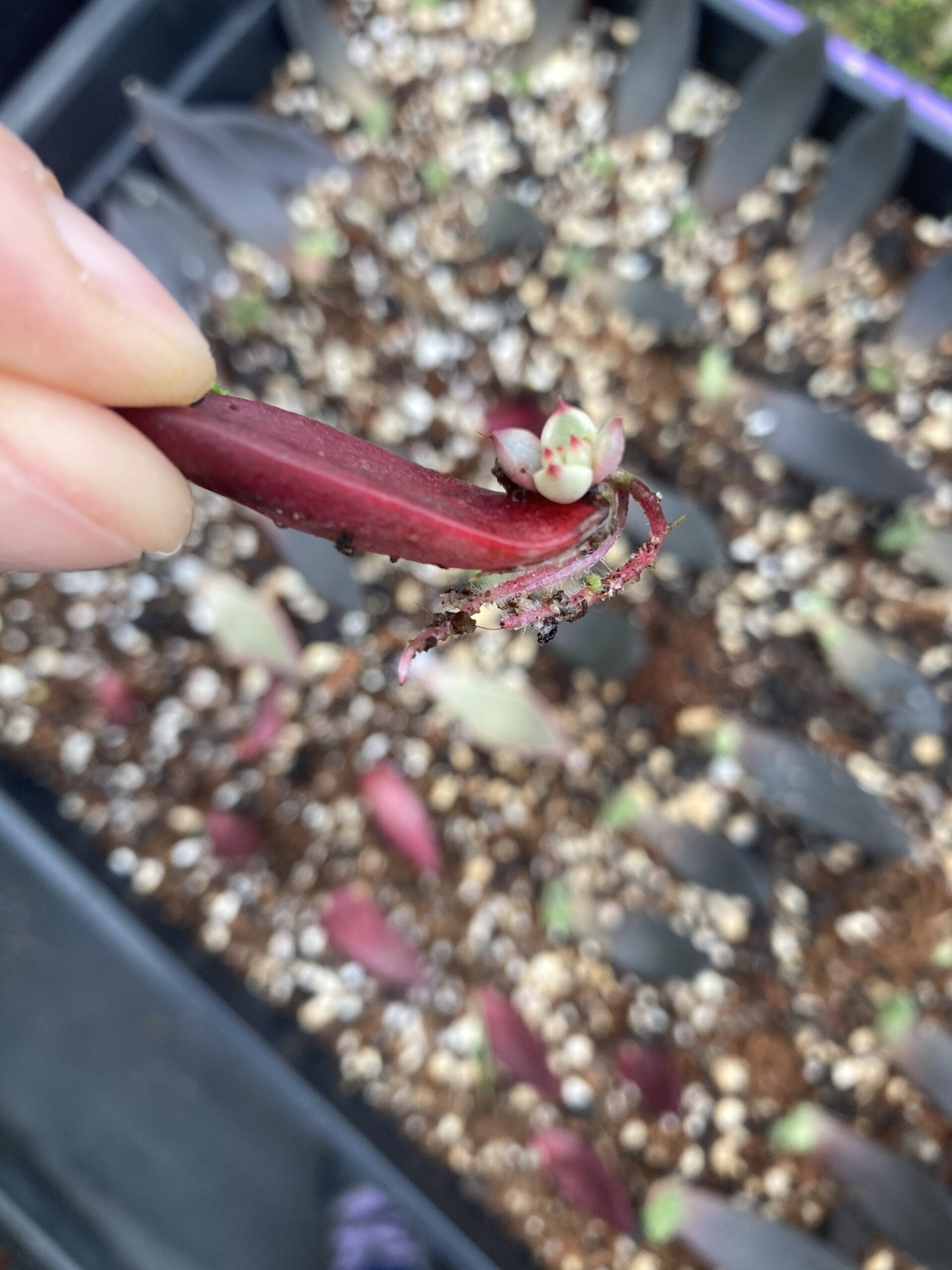Your cart is currently empty!

How To Propagate Echeveria Romeo Rubin From Leaf

With its bright red, waxy rosette Echeveria Rubin is a very desirable succulent. This gorgeous plant usually produces solitary rosettes with zero to only a few pups, if you’re lucky. It is quite rare to get more than one or two pups from one plant.
Cutting the top of the rosette to try and encourage more rosettes to grow from the base is also tricky as Rubin grows low to the ground and is stemless. It is quite easy to destroy a whole plant this way, as the top of the rosette can fall apart. If the cut is made too high, the bottom can rot. But is it possible, like with so many other succulents, to grow Echeveria Rubin from leaves?
It is possible to grow Echeveria Rubin from leaves, but not easy. Firstly, it is difficult to take a viable leaf off as they tend to break and secondly, the success rate of the leaves growing a new plant is extremely low.
A word of warning- the probability of success when it comes to propagating Echeveria Rubin from a leaf is low and if you are not prepared to take the odds, please do not try as you can ruin your plant.
Below I will demonstrate a step by step process of propagating Echeveria Rubin from leaves. A word of warning- the probability of success is low and if you are not prepared to take the odds, please do not try as you can ruin your plant.
My nursery has been growing this plant for the last 2 years and I have been experimenting a lot with Rubin and possible propagation methods. The end result of these experiments is that it is quite hard to propagate Rubin (hence why it usually costs quite a bit buy one).
With plants like this, and there are quite a few succulents that are not easy to propagate, I usually buy tiny tissue culture plants. These are plants grown in a sterile environment from small pieces of a plant. If you’d like to learn more you can google what Plant Tissue Culture is many other websites explain it better than I ever could. Tissue culture plants are usually not available for sale to the general public and minimal orders are in the thousands.
If you are a hobbyist that would like to have a go at trying to propagate Rubin from leaves, you can certainly try. In my leaf propagation experiments I have come across two problems. One, Echeveria Rubin is a chunky plant and the leaves are easily broken. I have, however, found a way around this.
Before trying to separate the leaves, it will help to dry the plant out. Though do be careful not to kill it. Starving Rubin of water and keeping the potting mix dry for a few days will make the leaves more flexible and bendable which will help with taking them off without breaking. To have a viable leaf, it has to pulled off the stem in its entirety. Nothing of the leaf can be left on the stem. Even a tiny break will render the leaf useless.
Once your plant is dried out, find a leaf at the bottom of the rosette that has a little bit of a room to be manoeuvred to one side. Try and pull and push gently until the leaf dislodges. It is very likely you will break the leaf even if the plant is dried out. I’d recommend only taking a very low number of leaves off, just so you don’t completely destroy your original plant. 3-5 leaves will do, depending on the size of your Rubin.
When you have a few leaves pop them on a tray or a napkin and place in dry, very bright but shaded spot, out of direct sun or in a greenhouse with 30% shade factor. Wait for the leaves to grow roots and leaves. This can take way over a month with Echeveria Rubin. For me, it took 1-2 months. Some leaves can shrivel and die without any growth and some will grow roots but no new leaves. Only leaves that will grow new baby plants will end up growing to a whole new plant.
The number 2 problem with propagating Echeveria Rubin from a leaf is that only about 10%, if that, will make it.
If you’re lucky enough to get little plantlets, you can transfer to a pot with good quality potting mix. Sometimes the leaves will grow first and the roost will follow later. If there are only leaves growing, place on top of the potting mix. DO NOT try and separate from the leaf your new plant is growing out of- it will eventually shrivel and die on its own.
If your leaf has both new shoots and roots, make a small hole in the potting mix and gently place the roots in. Cover the roots with more potting mix. The newly sprouted baby leaves have to be above soil level.
The little leaf babies are quite vulnerable at this stage and should again be placed in a covered spot. Greenhouse with diffused light or under 30% shadecloth would be ideal. As your plant grows bigger, it will get more resilient to the elements.
Do water your leaves once they have sprouted and are in the potting mix. This will encourage the roots. Make sure the potting mix is not over saturated as soggy mix can rot the leaf and your new plant. Slightly moist is what you should be aiming for.
Echeveria Rubin is a superbly slow growing plant and it is likely the leaf babies will take at least a year before they are any substantial size (50mm in diameter).